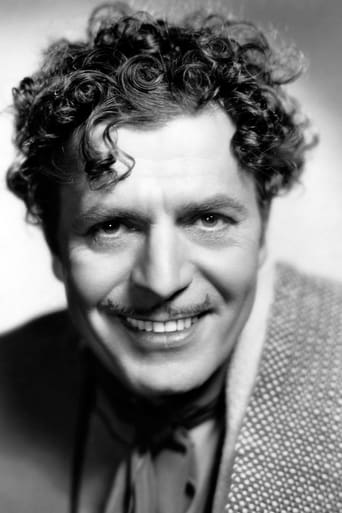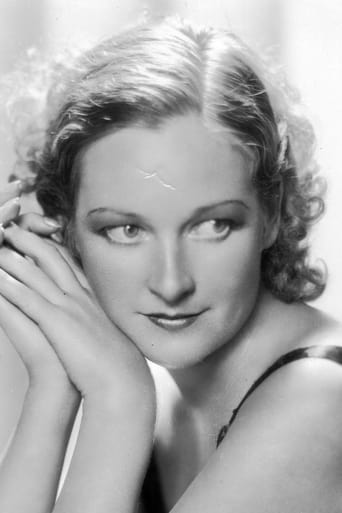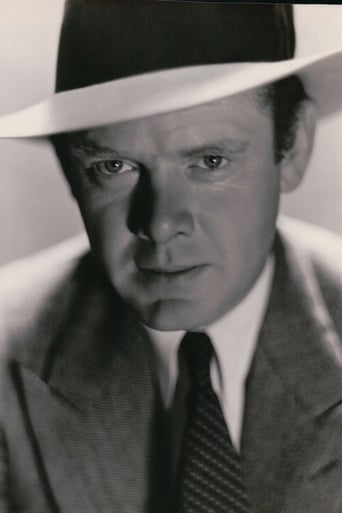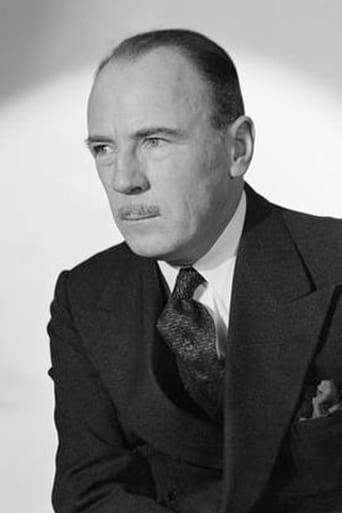Mjeteconer
Just perfect...
Curapedi
I cannot think of one single thing that I would change about this film. The acting is incomparable, the directing deft, and the writing poignantly brilliant.
Livestonth
I am only giving this movie a 1 for the great cast, though I can't imagine what any of them were thinking. This movie was horrible
Philippa
All of these films share one commonality, that being a kind of emotional center that humanizes a cast of monsters.
davidjanuzbrown
This is the worst film that DeMille ever made ( at least those that I saw). It is boring, and simply does not work as a Western ( the Coca Cola placement came to mind). Perhaps if the scenes in England were cut and more Lupe Velez were shown I would like it better? Speaking of Lupe although she played an Indian (Naturich), she looks more gypsy then anything else, but she was much better then anyone else. Especially Warner Baxter who was better as a Mexican ( In Old Arizona) then an Englishman in this movie ( sort off like William Powell in 'The Key' does not work). Although I am no fan of this movie, it is worth watching because of Lupe Velez and because all three of his ( DeMille) movies at MGM ( Dynamite and Madam Satan are the others) are rarely shown.3 of 10 stars.
Jimmy L.
I really enjoy films from around 1931. I like the "early talkie" aesthetic, with gritty black & white photography, sparse (if any) musical scoring, and slightly edgy pre-Code content. In those days of the studio system, Hollywood studios would churn out lots of inconsequential 72-minute quickies. But Cecil B. DeMille's THE SQUAW MAN (1931) is clearly not one of them. DeMille was an auteur and THE SQUAW MAN is something special. A cut above the usual Hollywood fare of the time.This 1931 film is actually DeMille's third adaptation of the story, following his 1914 and 1918 silents. The third time's the charm for DeMille, who crafts an involving tale with a fine cast and the added dimension of sound.Jim Wyngate nobly leaves England to live in self-exile in America for the sake of his cousin's marriage to the beautiful Lady Diana. At the same time, he nobly volunteers himself to take the blame for his cousin's embarrassing mishandling of charitable funds. He settles out West and takes up ranching under an assumed name. He makes friends and enemies amongst the cowboys and becomes attached to a young Indian woman. (Native American, that is.) After years of living as a cowboy in Arizona, will Wyngate return to England and resume his past aristocratic lifestyle? Can he?The cast is great across the board. Warner Baxter, three years removed from his Oscar-winning turn as the Cisco Kid (IN OLD ARIZONA - 1928), stars as Jim Wyngate, the selfless hero. The lovely Eleanor Boardman (THE CROWD - 1928) plays Lady Diana, who loves Wyngate but is married to his cousin (Paul Cavanagh). Charles Bickford is great as the heavy and DeWitt Jennings does a good job as the villainous sheriff. Roland Young (TOPPER - 1937), a personal favorite of mine, has a nice supporting role.Sexy Mexican spitfire Lupe Velez is Naturich, the "primitive-minded" Indian girl who is chivalrously defended by Wyngate and repays him by saving his life a couple times. There's a connection between the two that transcends cultural barriers and, half a world away from Diana and his past life, the white man takes Naturich as his wife. Velez is heartbreaking in a scene where she fashions a crude toy horse as a birthday gift for her half-breed son (Dickie Moore), who is more interested in his model train.This film is a vast improvement over C.B. DeMille's own landmark 1914 version. Although the basic plot line is the same, there are several differences in the stories. I don't know which film is closer to the original "Squaw Man" play, but I found this talkie version more effective. (In fact, the 1914 film might not have made as much sense if I wasn't already familiar with the story from this later version.)The key to this version is the emotional ties between the characters. Jim loves Diana, but nothing can come of it. So he moves thousands of miles away, but we see his face when he sees her picture in the society section. He learns to move on while living with Naturich, but Diana makes a surprise visit and expects things to be just as they were. Jim is excited at the prospect of returning to England, but there's no place for Naturich in English society. And noble Jim wouldn't walk out on poor sweet Naturich. But what of their son? Half white man, half Indian. Should he be taught to rope cattle and beat tom-toms, or should he receive the fine education to which the Wyngate family is accustomed? Jim struggles to decide his son's future at a crucial point. There are no simple solutions for anyone. It may sound melodramatic, but viewers are invested in the characters and must know how things turn out.The characterizations in the 1914 silent film lack heart.
MartinHafer
I enjoyed this film far more than I expected--especially since I usually hate DeMille films and the film comes off as very patronizing towards American Indians. Let me explain both of my complaints. First, too often Cecil B. DeMille favored huge spectacular films that featured rather cardboard characters and so for that reason I had little interest in seeing the film. Second, while it's obvious that DeMille is trying to say something positive about respecting and giving equality to our Indian brothers, the film often comes off as paternalistic and racist. It's obvious that DeMille is trying to say something profound about American Indians but it just backfires.The film begins in England and oddly Warner Baxter is cast as an upper-class Brit despite his Columbus, Ohio origins. While he was an amazingly underrated actor and did this role well for an American, it seemed odd that everyone in "Old Blighty" sounded like a local but Baxter. Despite this, I really liked this portion of the film. Baxter has fallen in love with his slimy cousin's wife, but being a decent man he's decided to leave the country because if he stays he knows that a romance between them is inevitable. At about the same time, it turns out that the cousin has embezzled some funds and Baxter tells the cousin to blame this on him! After all, he reasoned, he's leaving the country and won't come back and blaming Baxter will get the cousin out of a jam. While it seemed like a very unlikely plot, the writing and execution of it was so good that I managed to suspend disbelief. And, for once, DeMille seemed to do a decent job with characterizations--at least in this part of the film. There were no huge scenes and the film was very character-driven.Later, after Baxter leaves England, he inexplicably relocates to the most desolate and godforsaken part of the United States. The place is all dirt and cacti and the idea of an English lord living there is stretching things a bit!! However, this also worked thanks to great acting. The conflict between the evil and land-crazy Charles Bickford and Baxter was interesting as was Baxter's coming to a young Indian girl's defense when Bickford is abusing her. I though that Baxter's treating the girl like a human being was a very positive statement and having this Indian fall in love with a White man was a great plot element. After all, Americans (and most others throughout the world) probably would have not approved of this "miscegenation". DeMille allowing them to slowly fall in love and marry was a great stand against racism--too bad the final portion of the film undid a lot of the positive strides such a plot might have made. By the way, the lady was played by Lupe Valez--who doesn't exactly look Indian although all the other Indians in the film are authentic. Plus, her talking and acting like a child through the film made the whole thing seem paternalistic after a while.Out of the blue, the cousin is killed and he admits that it was he and NOT Baxter who embezzled the money. This allowed the cousin's wife to seek out Baxter and renew their love. However, when she realizes that in the seven years that have passed that Baxter has married, this plan cannot be. From this moment on, the film starts to slide downhill...and fast! First, since the cousin is dead, apparently Baxter is the lord of the family estates and they want him to return to England. However, he loves Lupe too much to leave Arizona so he proposes to instead send their cute little son (Dickie Moore) instead!! This made no sense, as you wonder how a man can love his wife yet send away their three year-old son! Why not try moving the family to the UK or perhaps spend part of the time in America and part of the time at the family estate?! Second, and this is a bad example of script writing, although it's been seven years since Lupe murdered Bickford (and it was VERY justified), at the exact same moment the folks from England visit, the sheriff has just obtained new evidence to implicate Valez for murder!! Talk about a convenient coincidence!!! Now, at her death, Baxter would be available to move back to England with his kid and his old flame!! This is just too much coincidence to seem like anything other than sloppy writing. Plus, it seemed to say that Baxter's marrying an Indian was more of an inconvenience than anything else. You would have thought that since the original SQUAW MAN came out in 1914 that DeMille could have done something to fix this plot element.Overall, it's an entertaining film that should have been a very positive statement about interracial love and understanding. Instead, the Indians seemed rather stereotypical and Valez's character seemed amazingly one-dimensional. Oddly, after seven years of marriage, she still talked a bit like Charlie Chan and an American Indian rolled into one! A nice try and this is a film that would be great to remake today--after making the characters more believable.
Cineanalyst
Lupe Vélez proves that a Mexican playing a Native American in the United States isn't necessarily any less insulting than a white person taking the part. Here, Vélez doesn't even dress the part--wearing traditional Mexican-looking clothes. I would overlook the racism inherit in "The Squaw Man" melodrama--cloaked in the selling point of miscegenation--if there were anything more to the picture. Cecil B. DeMille was shot at while making the 1914 version of the hackneyed stage soap opera, and this time he lost his job. If anyone finds the 1918 version, I'll pass. Why did DeMille bother? In 1914, he was learning the craft; by 1931, he was a competent filmmaker, who had since surrendered his ambitions for artistic innovation in favor of lowbrow commercialism. I suppose, then, that it made sense for DeMille to try a talkie remake of his first box-office success. The plot is slightly more coherent this outing, but remains very contrived. The acting and dialogue are atrocious.(There's also a scene where Vélez undresses.)




